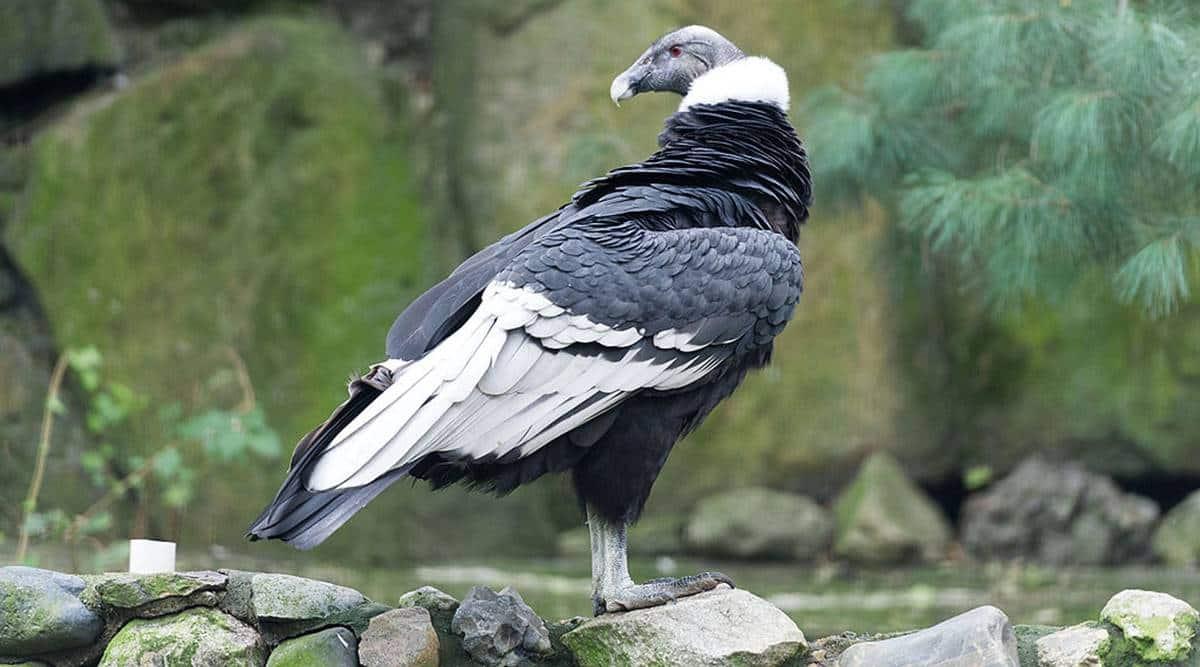Birds are some of the most fascinating creatures on the planet, with a wide variety of shapes, sizes, and abilities. While some birds are known for their beautiful songs, others are known for their impressive size and wingspan.
In this article, we will explore the top 9 largest flying birds in the world by wingspan. From the wandering albatross to the whooper swan, these birds are truly a sight to behold.
You are reading: The Top 9 Largest Flying Birds In The World
So, let’s take a closer look at these magnificent creatures and learn more about what makes them so unique.
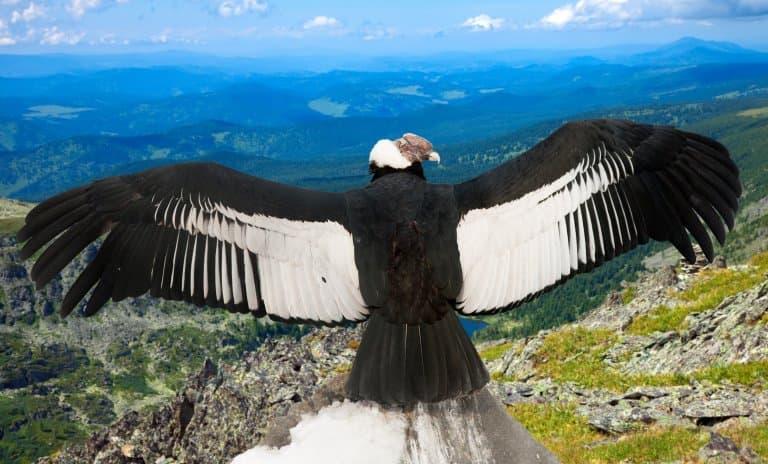
The Top 9 Largest Flying Birds In The World
Wandering Albatross
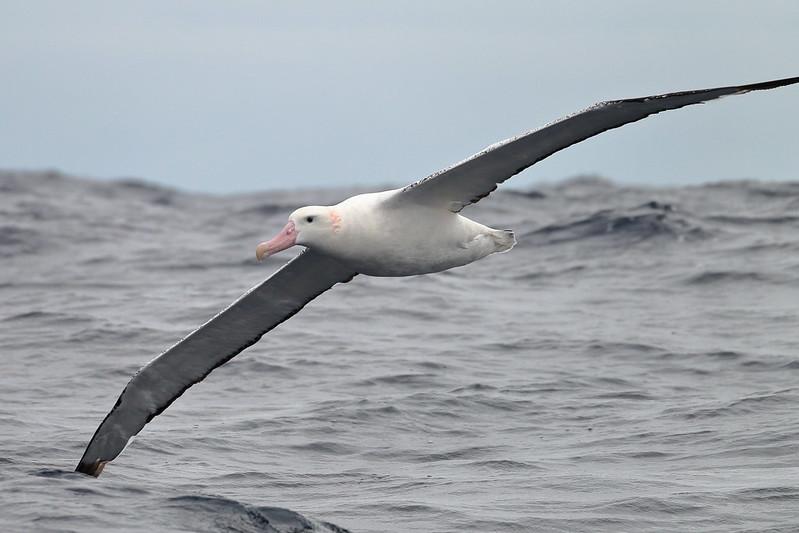
The wandering albatross (Diomedea exulans) is a large seabird from the family Diomedeidae, which has a circumpolar range in the Southern Ocean. It is one of the largest birds in the world, with the greatest known wingspan of any living bird, up to 11 feet.
The wandering albatross is also one of the most far-ranging birds, with some individuals known to circumnavigate the Southern Ocean three times, covering more than 75,000 miles in one year. They are great gliders and can soar through the sky without flapping their wings for several hours at a time.
Wandering albatrosses have a white head, neck, and body, a wedge-shaped tail, and a large pink beak. They mate for life and breed on remote islands, forming large colonies. Their diet consists of cephalopods, small fish, and crustaceans. Wandering albatrosses are also one of the best known and most studied species of birds.
Great White Pelican
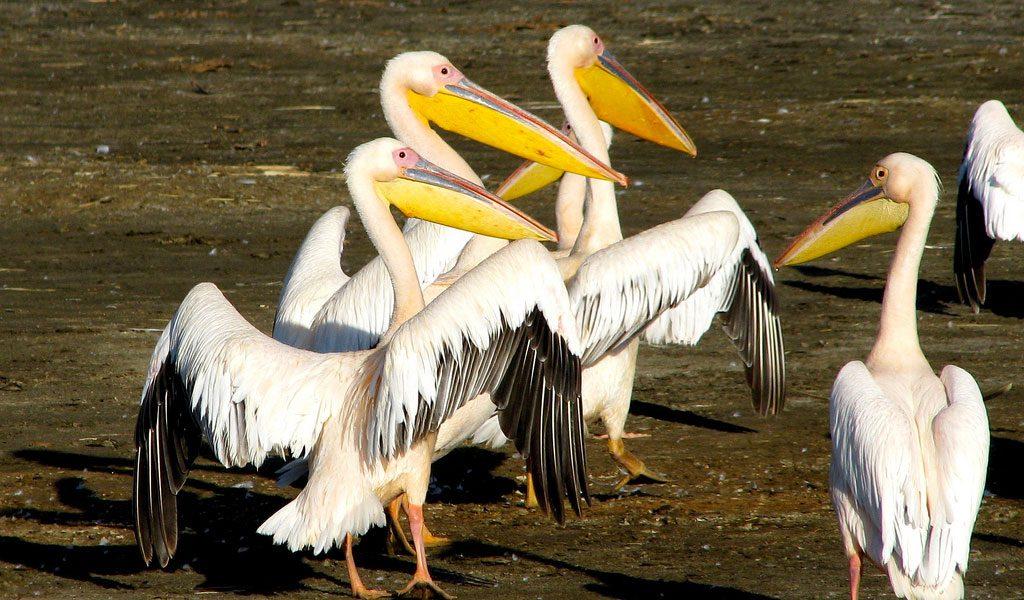
The great white pelican (Pelecanus onocrotalus) is a large bird in the pelican family, found in swamps and shallow lakes from southeastern Europe through Asia and Africa.
– The great white pelican is one of the largest birds in the world, measuring 140 to 180 cm (55 to 71 in) in length with a wingspan of 226 to 360 cm (7 ft 5 in to 11 ft 10 in).
– It has a huge pink and yellow bill, and a dull pale-yellow gular pouch.
– The great white pelican is highly sociable and often forms large flocks.
– It is well adapted for aquatic life, with short strong legs and webbed feet that propel it in water.
– In flight, it is an elegant soaring bird.
– The great white pelican is a migratory bird, found mostly in Africa and parts of Saudi Arabia along the Red Sea during the nonbreeding season.
– It has white feathers with black flight feathers, a large bill that is bright yellow, rosy pink, and light blue, and a large yellow pouch underneath the bill.
– Great white pelicans have been known to breed in parts of Turkey, northeastern Uzbekistan, the western half of Armenia, and the east coast of Azerbaijan.
– The great white pelican is one of the world’s largest flying birds and is found in the shallow swamps of Africa.
Overall, the great white pelican is an impressive bird with a unique appearance and well-adapted abilities for aquatic life.
Southern Royal Albatross
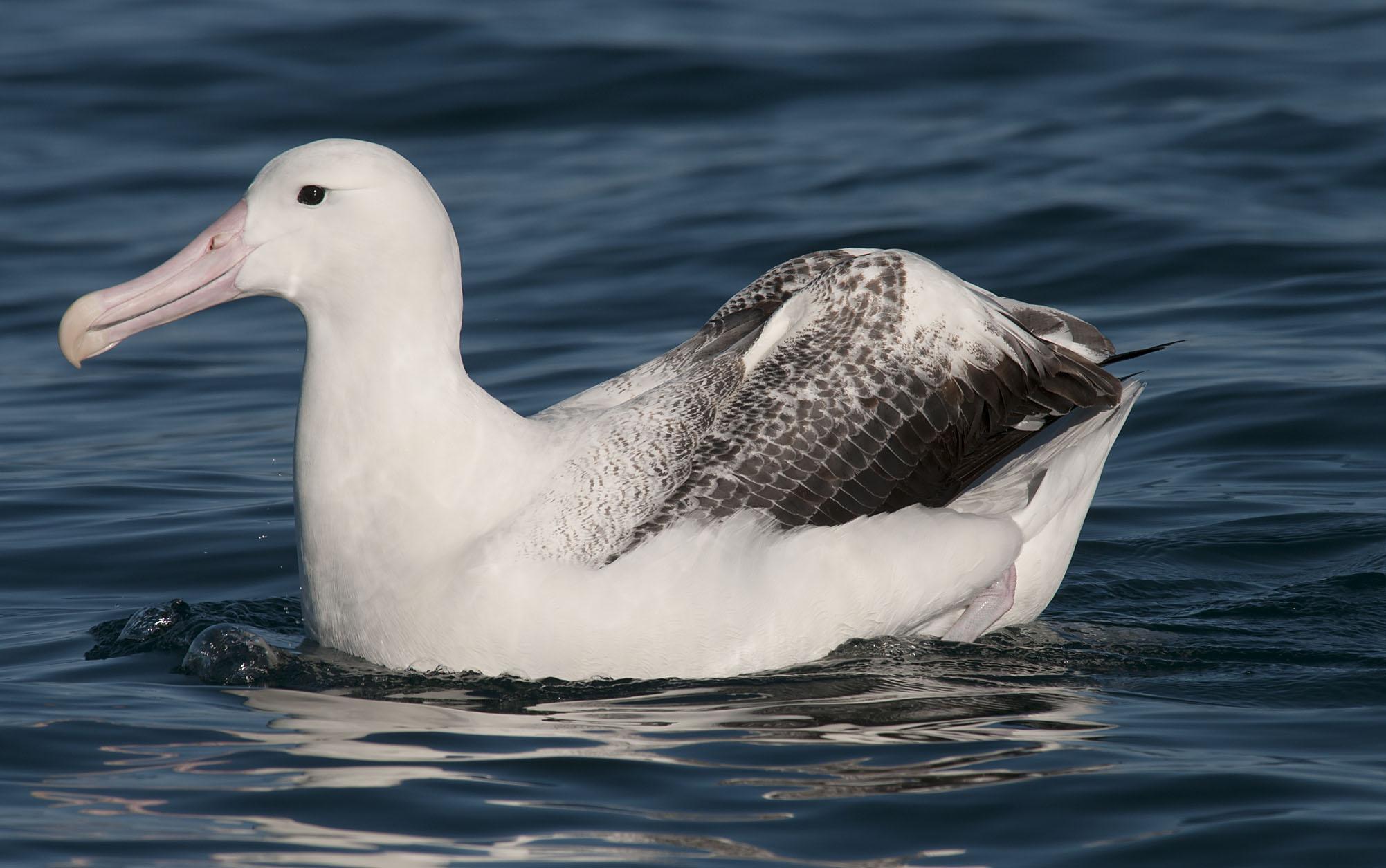
The Southern royal albatross, also known as toroa, is a large seabird from the albatross family.
– The Southern royal albatross has an average wingspan of above 3 m (9.8 ft), making it one of the two largest species of albatross, together with the wandering albatross.
– Recent studies indicate that the Southern royal albatross may, on average, be somewhat larger than the wandering albatross in mass and have a similar wingspan, although other sources indicate roughly similar size for the two species and the wandering species may have a larger average (and maximum) wingspan in some colonies.
– The Southern royal albatross is one of the great albatross species, with a wing-span in excess of 3 m and weighing approximately 9 kg.
– Most of the Southern royal albatross population is found between 30° S and 45° S. The majority of the world’s population of Southern royal albatrosses nest on the rat-free subantarctic Campbell Island, around 8,200 to 8,600 pairs. There are smaller colonies on Adams Island.
– The Southern royal albatross is included in the genus Diomedea and is classified under the family Diomedeidae.
– The Southern royal albatross has a black and white plumage with a pink bill and a pale yellow iris.
– They feed on fish, squid, and krill and are known to travel long distances to find food.
– The Southern royal albatross is a long-lived bird, with some individuals known to live up to 58 years.
Overall, the Southern royal albatross is an impressive bird that is well adapted to life at sea. With its large wingspan and unique appearance, it is truly a sight to behold.
Andean Condor
The Andean condor (Vultur gryphus) is a large bird of prey found in the Andes mountains and adjacent Pacific coasts of western South America.
– The Andean condor is one of the largest flying birds in the world, with a wingspan of up to 10 feet.
– It is a massive bird, among the largest in the world that are able to fly, with males weighing up to 33 pounds.
– The Andean condor is a scavenger, feeding on carrion, and is known for its keen sense of smell.
– It has black feathers with a white collar, and a bald head and neck that can range in color from yellow to orange to red.
– The male Andean condor is visibly different from the female, with a large comb on his head that the females lack.
– The Andean condor is a national symbol of several South American countries, including Bolivia, Chile, Colombia, and Ecuador.
– It is considered vulnerable by the IUCN due to habitat loss and secondary poisoning from lead in carcasses killed by hunters.
– The Andean condor can be found from Colombia and northwestern Venezuela, all the way south to Tierra del Fuego.
– It is a strong flier, often soaring over high montane canyons and peaks throughout the Andes or along the coast in the southern part of its range.
Read more : Discover 10 Types Of Wild Birds
Overall, the Andean condor is an impressive bird with a unique appearance and well-adapted abilities for scavenging. With its large wingspan and keen sense of smell, it is truly a remarkable sight to behold.
Dalmatian Pelican
The Dalmatian pelican (Pelecanus crispus) is the largest member of the pelican family and is perhaps the world’s largest freshwater bird, although it is rivaled in weight and length by the largest swans.
Appearance
– The Dalmatian pelican has stunning silvery-white plumage during the breeding season, which contrasts with the orange-red rubbery pouch beneath its bill and the purple to yellow bare skin around its eyes.
– On their napes, the birds have a thick silver crest of feathers.
– Over the breeding season, their pouches fade to a yellow color, and in winter their plumage loses its sheen of silver and appears whitish or gray instead.
– The bare skin around their eyes can vary from yellow to purplish in color.
Size
– With a wingspan of almost three meters, the Dalmatian pelican is one of the most impressive breeding birds in Europe.
– It weighs over 10 kg.
– The Dalmatian pelican is the largest member of the pelican family and is perhaps the world’s largest freshwater bird, although it is rivaled in weight and length by the largest swans.
Habitat
– The Dalmatian pelican is found in freshwater lakes and rivers in Europe and Asia.
– It frequents rivers, extensive wetlands, and estuaries, often in large flocks.
Conservation
– Conservation measures have resulted in a population increase in Europe, particularly at the species’s largest colony (Lake Mikri Prespa in Greece), but also in other countries.
– The Dalmatian pelican is one of the species to which the Agreement on the Conservation of African-Eurasian Migratory Waterbirds (AEWA) applies.
– Conservation efforts have been undertaken on behalf of the Dalmatian pelican, including habitat protection and captive breeding programs.
Mute Swan
The mute swan (Cygnus olor) is a species of swan and a member of the waterfowl family Anatidae. It is native to much of Eurosiberia and, as a rare winter visitor, the far north of Africa. It is an introduced species in North America, home to the largest populations outside of its native range, with additional smaller introductions in Australasia and southern Africa.
Appearance
– Mute swans are very large waterfowl with heavy bodies, short legs, and a long, slender neck habitually held in a graceful S.
– They have a large, flat bill with a black knob on top of the bill.
– Their plumage is white, and they have an orange-red rubbery pouch beneath their bill and a purple to yellow bare skin around their eyes.
Behavior
– Mute swans form long-lasting pair bonds and are known for their reputation for monogamy.
– They are highly territorial and can be very aggressive in defense of their nests and are highly protective of their mate and offspring.
– During a courtship display, mute swans utter a rhythmic song, which helps synchronize the movements of their heads and necks.
– Mute swans have enormous appetites and can eat up to 8 pounds a day of submerged aquatic vegetation, removing food and habitat for other species faster than the grasses can recover.
Habitat
– Mute swans can be found in freshwater lakes and rivers in Europe and North America.
– They prefer shallow water with plenty of vegetation.
Overall, the mute swan is an impressive bird with a unique appearance and well-adapted abilities for life in freshwater habitats. With their territorial behavior and large appetites, they play an important role in their ecosystems.
Marabou Stork
The marabou stork (Leptoptilos crumenifer) is a large wading bird in the stork family Ciconiidae native to sub-Saharan Africa.
Appearance
– The marabou stork has a unique appearance, with cloak-like wings and back, skinny white legs, and sometimes a large white mass of “hair”.
– It has a long, reddish pouch hanging from its neck, which is used in courtship rituals.
– The marabou stork’s orange-red head has black spots that are concentrated towards the forehead and base of the bill, as well as their inflatable throat sac.
– It stands on long, grey legs, its upper body and wings are dark grey to black, and its underparts are white.
Behavior
– Like most storks, the marabou is gregarious and a colonial breeder.
Read more : What Birds Eat Worms?
– It is a scavenger, often feeding on carrion, and is known to hang around dumps, slaughterhouses, and fishing villages looking for scraps.
– Marabou storks often gather in groups and are usually silent birds, but sometimes they grunt or croak using their throat pouch, or they rattle their bills.
Habitat
– The marabou stork breeds in both wet and arid habitats, often near human habitation, especially landfill sites.
– It can be found in open dry savannas, grasslands, swamps, riverbanks, lake shores, and receding pools where fish are concentrated.
Overall, the marabou stork is an impressive bird with a unique appearance and well-adapted abilities for scavenging. With its long legs and neck, it is truly a remarkable sight to behold.
Eurasian Black Vulture
The Eurasian black vulture, also known as the cinereous vulture, is a large raptor in the family Accipitridae and is distributed through much of temperate Eurasia.
Appearance
– With a body length of 1.2 m (3 ft 11 in), 3.1 m (10 ft) across the wings, and a maximum weight of 14 kg (31 lb), it is the largest Old World vulture and largest member of the Accipitridae family.
– The cinereous vulture is distinctly dark, with the whole body being brown excepting the pale head in adults, which is covered in fine blackish down.
– Although appearing mainly black, particularly from a distance, the cinereous vulture is predominantly brown in color.
– The head appears bald, although it may be covered with fine blackish down.
Behavior
– The cinereous vulture is a scavenger, feeding on carrion, and is known to hang around dumps, slaughterhouses, and fishing villages looking for scraps.
– It is a gregarious bird and often feeds in groups.
– Cinereous vultures are particularly sensitive to human disturbance, especially during the breeding season.
Habitat
– The cinereous vulture is found in a variety of habitats, including mountains, forests, and grasslands.
– It is native to much of temperate Eurasia and is also known as the black vulture, monk vulture, and Eurasian black vulture.
Overall, the Eurasian black vulture is an impressive bird with a unique appearance and well-adapted abilities for scavenging. With its large size and gregarious behavior, it plays an important role in its ecosystem.
Whooper Swan
The whooper swan (Cygnus cygnus) is a large northern hemisphere swan and the Eurasian counterpart of the North American trumpeter swan.
Appearance:
– The whooper swan is a large white swan, bigger than a Bewick’s swan, with a long thin neck, which it usually holds erect, and black legs.
– It has a wingspan of up to 8 feet and can weigh up to 30 pounds.
– The whooper swan has a distinctive honking call, which can be heard from a long distance.
Behavior
– Whooper swans pair for life and are known for their strong family bonds.
– They are migratory birds and travel over land, making brief stopovers.
– Whooper swans are known for their distinctive honking calls, which can be heard from a long distance.
Habitat
– Whooper swans breed in the Arctic tundra and taiga, and winter in wetlands and shallow freshwater habitats.
– They can be found in northern Europe and Asia, as well as in small numbers in the Aleutian Islands of Alaska.
Overall, the whooper swan is an impressive bird with a unique appearance and well-adapted abilities for life in freshwater habitats. With their strong family bonds and distinctive calls, they play an important role in their ecosystems.
FAQS
1. What is the largest flying bird in the world?
The largest flying bird in the world by wingspan is the wandering albatross, with an official maximum wingspan on record of 12.1 feet.
2. What is the second-largest flying bird in the world?
The second-largest flying bird in the world is the great white pelican, with a wingspan of 12 feet.
3. What is the third-largest flying bird in the world?
The third-largest flying bird in the world is the southern royal albatross, with a wingspan of 12 feet.
4. What is the heaviest-flying bird in the world?
The heaviest-flying bird in the world is the great bustard, which can weigh up to 46 pounds.
5. What is the difference between wingspan and weight?
Wingspan refers to the distance between the tips of a bird’s outstretched wings, while weight refers to the mass of the bird’s body.
6. Where can I find these large flying birds?
These large flying birds can be found in various parts of the world, depending on the species. For example, the wandering albatross is found in the Southern Ocean, while the whooper swan is found in the northern hemisphere.
7. What do these large flying birds eat?
These large flying birds have different diets depending on the species. For example, the Andean condor is a scavenger that feeds on carrion, while the whooper swan feeds on aquatic vegetation.
8. Are these large flying birds endangered?
Some of these large flying birds are considered vulnerable or endangered due to habitat loss and other factors. For example, the Andean condor is considered vulnerable by the IUCN.
Source: https://petstutorial.com
Category: Birds

